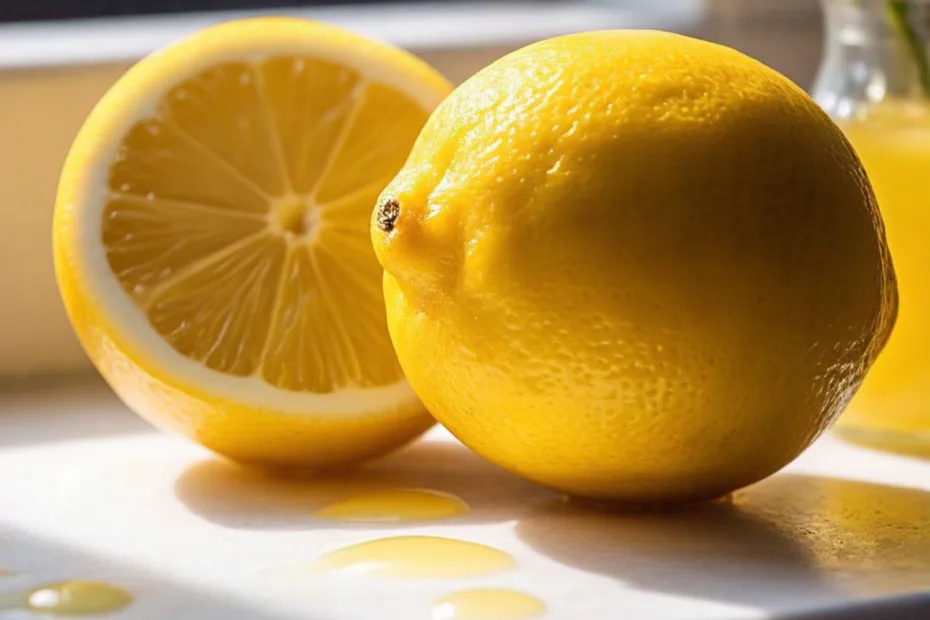Lemon in Spanish: Limón
The word for lemon in Spanish is limón (pronounced lee-MON). This vibrant yellow fruit, known for its tart and refreshing flavor, is a staple in cuisines and cultures worldwide, including Spanish-speaking regions.
In this article, we’ll explore the meaning of limón, its culinary uses, health benefits, cultural significance, and interesting facts about lemons in Spanish-speaking cultures.
Example Sentences About Lemons (Limones)
- Preparé una limonada casera con limones frescos del jardín.
(I made homemade lemonade with fresh lemons from the garden.) - El pollo al limón es una receta tradicional española.
(Lemon chicken is a traditional Spanish recipe.) - En Perú, el ceviche se hace con jugo de limón.
(In Peru, ceviche is made with lemon juice.) - Las limonadas son perfectas para los días calurosos de verano.
(Lemonades are perfect for hot summer days.) - Los limones son esenciales en la dieta mediterránea.
(Lemons are essential in the Mediterranean diet.)
1. Meaning of Limón
In Spanish, limón refers to the lemon fruit, which is oval-shaped, bright yellow, and known for its sour taste. In some regions, however, the term can also refer to limes, especially in Mexico and Central America, where the green citrus fruit is often called limón as well.
Example Sentences
- Me gusta añadir limón a mi agua para darle más sabor.
(I like adding lemon to my water for more flavor.) - Este pastel tiene un delicioso sabor a limón.
(This cake has a delicious lemon flavor.)
2. Types of Limones
There are different varieties of lemons, and their names in Spanish may vary depending on the region:
Yellow Lemon (Limón Amarillo)
- The classic lemon, most common in Spain and South America.
- Known for its bright yellow skin and tart juice.
Green Lemon (Limón Verde)
- Refers to limes in many Spanish-speaking countries like Mexico and the Caribbean.
Regional Varieties
- Limón Eureka: A popular variety grown in Spain and Latin America.
- Limón Meyer: Sweeter than regular lemons, often called limón dulce.
3. Culinary Uses of Limón
Lemons are incredibly versatile and play a significant role in Spanish and Latin American cuisines.
As a Flavor Enhancer
Lemons are used to brighten up the flavors of various dishes:
- Pescado al Limón: Fish cooked with lemon juice and herbs.
- Pollo al Limón: Lemon chicken, a popular dish in Spain.
In Beverages
- Limonada: Lemonade, a refreshing drink made from lemon juice, sugar, and water.
- Té con Limón: Tea with a splash of lemon.
As a Preservative
Lemon juice is used to prevent fruits and vegetables from browning. For example:
- Guacamole con Limón: Guacamole with lemon to keep it fresh and flavorful.
In Desserts
- Tarta de Limón: Lemon tart, a popular dessert.
- Flan de Limón: A creamy lemon-flavored flan.
4. Health Benefits of Lemons (Limones)
Lemons are not only flavorful but also packed with nutrients and health benefits:
- Rich in Vitamin C: Boosts immunity and supports healthy skin.
- Aids Digestion: Lemon water is a natural digestive aid.
- Hydration: Lemons encourage drinking more water by adding flavor.
- Detoxifying Properties: Helps cleanse the liver and body.
- Weight Management: Lemon juice is low in calories and can curb appetite.
Example Sentence
Beber agua con limón por la mañana es bueno para la salud.
(Drinking water with lemon in the morning is good for your health.)
5. Cultural Significance of Lemons (Limones)
Spain
In Spain, lemons are a key ingredient in Mediterranean cuisine. They are also grown extensively in regions like Murcia and Valencia, which are known for their citrus production.
Latin America
In many Latin American countries, limones are a symbol of freshness and are commonly used in salsas, ceviches, and marinades.
Symbolism
Lemons are often associated with cleansing, freshness, and vitality.
6. Idiomatic Expressions with Limones
Lemons feature in various Spanish idioms and sayings:
- “Cuando la vida te dé limones, haz limonada.”
(When life gives you lemons, make lemonade.)- Encourages optimism and making the best out of difficult situations.
- “Ser un limón agrio.”
(To be a sour lemon.)- Describes someone who is unpleasant or difficult to deal with.
7. Fun Facts About Lemons (Limones)
- Spain is a Major Producer: Spain is one of the largest producers of lemons in Europe.
- Lemon Festivals: The town of Murcia celebrates the Fiesta del Limón, showcasing the importance of lemons in the region.
- Natural Cleaner: Lemon juice is often used as a natural cleaning agent due to its acidity.
- Used in Art and Literature: Lemons have been featured in Spanish art and literature as symbols of beauty and transience.
8. Regional Recipes with Lemons (Limones)
Spain
- Sangría con Limón: A refreshing punch made with wine, fruit, and a splash of lemon juice.
- Gazpacho: Cold tomato soup often garnished with lemon for extra zest.
Mexico
- Ceviche: Raw fish marinated in lemon juice, a classic dish in Mexican cuisine.
- Agua Fresca de Limón: A popular lemon-based drink mixed with water and sugar.
Peru
- Lomo Saltado: A stir-fry dish that often includes a squeeze of lemon for added flavor.
10. Conclusion
The lemon, or limón, is more than just a fruit—it’s a cornerstone of culinary traditions and a symbol of vitality in Spanish-speaking cultures. Whether used to brighten a dish, enhance a drink, or support health, lemons offer a unique combination of flavor and utility.
From the sunny groves of Spain to the bustling kitchens of Latin America, the limón continues to bring zest, health, and tradition to tables worldwide.
Also read:
Additional Insights

Parallel Axis Theorem – Definition, Formula, Derivation & Applications

Axis of Symmetry: Definition, Equation, and Real-Life Applications

X and Y Axis: Definitions, Graphs and Examples
Coconut Spanish Translation

Cashew Spanish Translation
Axis Definition and Meaning

Walnut in Spanish Translation

Almond in Spanish – Translation and Meaning

